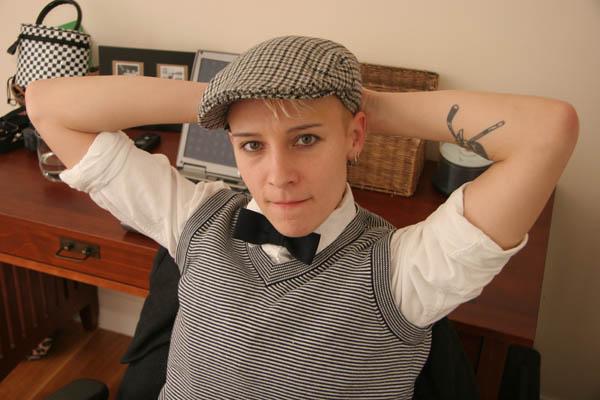January 19, 2012

Emily Sweeney
Crime might not always pay, but it certainly gets you places.
At least that was the case for Gustin Gang member and informant Thomas G. “Red” Curran, whose tuxedo-clad, bullet-riddled body was found at the wheel of a car resting at the bottom of a West Quincy Quarry in May of 1933.
Soon after, a funeral was held on Dorchester Avenue for the Southie native before he was interred in Mattapan’s Mount Hope Cemetery, a ceremony attended by no one but a small gathering of police officers.
For the past decade, Dorchester native and longtime reporter Emily Sweeney has spent hours pouring through police records and press clips concerning some of the bloodiest stories in Boston’s rich history of organized crime - Curran’s included. Sweeney will release a book, “Boston Organized Crime” on Jan. 30 with more than 200 rarely-seen images documenting the rise and fall of mobsters in the Greater Boston area.
The book, part of a series published by Arcadia Publishing, reads as something like a morbid coffee table book, offering readers a firsthand view of some of the city’s most notorious gangsters from the prohibition era through the rise of the Italian Mafia and the violent gang wars of the 1960s that left a trail of bodies throughout the city.
While the subject matter is at times quite graphic, Sweeney adds some touches of personality by letting gangsters speak for themselves.
“Power of the lam means you get a lesser sentence,” reads a quote from late 80s Mafia member and frequent fugitive Sonny Mercurio. “I advocate everybody run away.”
For Sweeney, who combined file footage from police records with present-day shots of crime scenes, local stories like Curran’s hit close to home.
“It was interesting taking the present day pictures whenever I got an exact address,” Sweeney said. “There’s a three-decker building on [906] Dot Ave by that glass repair place I walked by all the time. I double checked the address and pulled up old phone directories just to make sure. [It] turned out that was the funeral parlor where the poor guy’s funeral was.”
Sweeney began digging into organized crime as a reporter for the Brookline TAB, where she ran a cover story detailing the surprisingly large number of mob connections found throughout the Boston suburb.
Following the popularity of the story, Sweeney became a staff reporter for The Boston Globe and was soon compiling stories like “Greatest Hits: A Mob Guide to Boston.” She helped research mob history for Warner Brothers as part of a documentary produced in conjunction with the popular Boston-focused crime thriller The Departed.
While no stranger to the colorful history of organized crime, Sweeney said she is still surprised by some of the information her research has turned up. She points to a photo of Morris “Whitey” Hurwitz, a popular boxer in the 40’s with underground connections, enjoying a summer day at the beach, to the contents of the pugilist’s pockets, which Brookline Police collected and stored in a long-untouched file folder.
Although much of Sweeney’s work sets out to give readers a crime scene-side view of organized crime, she is quick to point out that there are lessons to be learned from these images once the shock has settled.
“The mug shots and crime scene photographs contained in this book are pieces of history chronicling a violent past that we cannot-and should not-forget,” Sweeney writes in her forward. “They illustrate how criminality, human nature, and the community of Greater Boston have changed - and how much has stayed the same - over the years.”



